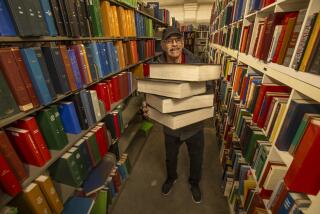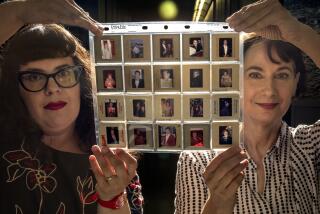The Finest of References
You’re a screenwriter working on a scene of your 17th century costume drama set along the Barbary Coast. Your villain needs to slip an undetectable yet lethal dose of poison into the heroine’s soup, and there must be an antidote. You have no idea what drug to name in your script, let alone whether or not the Berbers even ate soup in the 17th century. The whole plot revolves around this point, and the only books on your office shelf are an outdated world almanac and the paperback dictionary you’ve had since college. Who you gonna call?
If you’re smart--and lucky enough to work on the Universal lot--you’ll hit the speed dial to the Research Library, where either Margaret Ross or Marilyn Schanzer will take your questions, bill your account and get right back to you. Drawing from reference materials that include articles and photos crammed into floor-to-ceiling accordion files, magazines dating to the mid-1800s and buckling shelves of books spanning subjects from the Bible to zoos--the two women can pinpoint the most obscure bit of data in record time. Both are good-natured, soft-spoken, and supremely articulate, fielding questions both idiotic (“What’s the capital of Topeka?”) and arcane (“What dialect did the 5th century Moors use?”).
Started in 1916 for studio founder Carl Laemmle, the Universal Studios Research Library hopscotched its way across the lot, gathering reference volumes and amassing the amazing collection of materials it boasts today (it’s now housed across the street in the basement of a former motel on Lankershim Boulevard). A wild amalgamation of titles awaits: The Motion Picture Studio Directory--1920 (which catalogs mostly long-defunct New York-based studios); a bound almanac of New York Times editions from 1915-1917; shelves and shelves of books on home design, art and architecture. You think your attic holds an impressive set of unread National Geographics? The library’s collection dates from a tattered February 1906 issue right up to the June 1997 edition.
During television season, the library receives as many as 75 requests daily from producers, writers and set designers; queries for movies augment that total by another 25 to 30 or so a day.
“The nature of these requests can run from what type of medicine will stop a person’s heart to what type of medicine will then restart a person’s heart,” says Ross. “We’re working on a Raffaella De Laurentiis feature right now that’s set in the 15th century. We’re researching what type of foods were eaten during that time. What type of utensils were used. The place settings. How did they serve the food? If they were a very wealthy family, what did the servants serve the food on?”
The bulk of the library’s reference materials are for set designers and art directors, who often must re-create antiquated or downright extinct interiors and exteriors. “If you’re painting a wall back in the 1930s or ‘50s, it would be different than today,” Ross says. “We also have wallpaper patterns going back to the 1850s.”
Ross and Schanzer have also learned to immerse themselves thoroughly in a project’s Zeitgeist. “For ‘Schindler’s List,’ to take the book into script form, we had to find out what type of music was played in Germany at that time. Which artists and paintings were considered popular? We had to research not only the clothes that were worn by the SS men, but the clothes that were worn by the prisoners coming into the camp, and what was taken off of their bodies.”
“We try not to throw out anything,” Ross confides. “Because if you throw out something today, tomorrow someone will come along and say, ‘I need a photograph of the wind blowing telephone wires away from a Victorian house.’ And we’ll say, ‘Oh, my goodness . . . .’ ”
More to Read
Sign up for our Book Club newsletter
Get the latest news, events and more from the Los Angeles Times Book Club, and help us get L.A. reading and talking.
You may occasionally receive promotional content from the Los Angeles Times.






